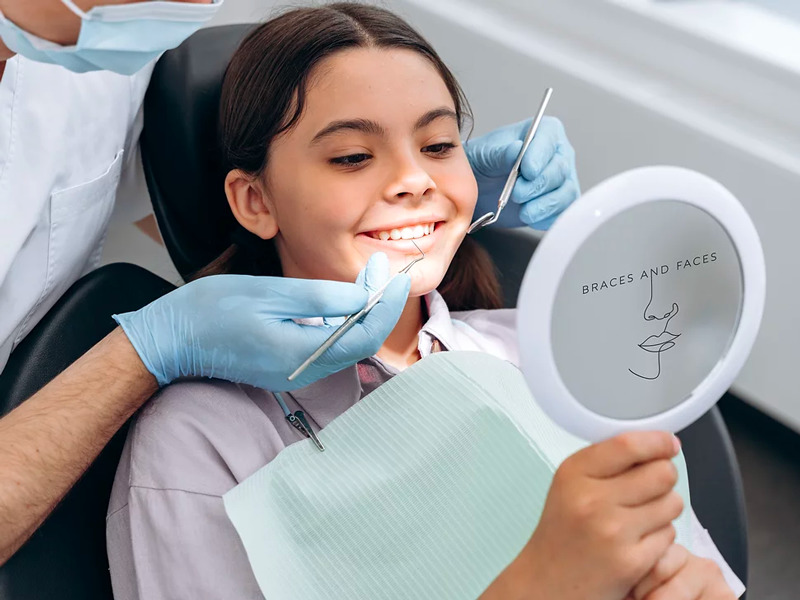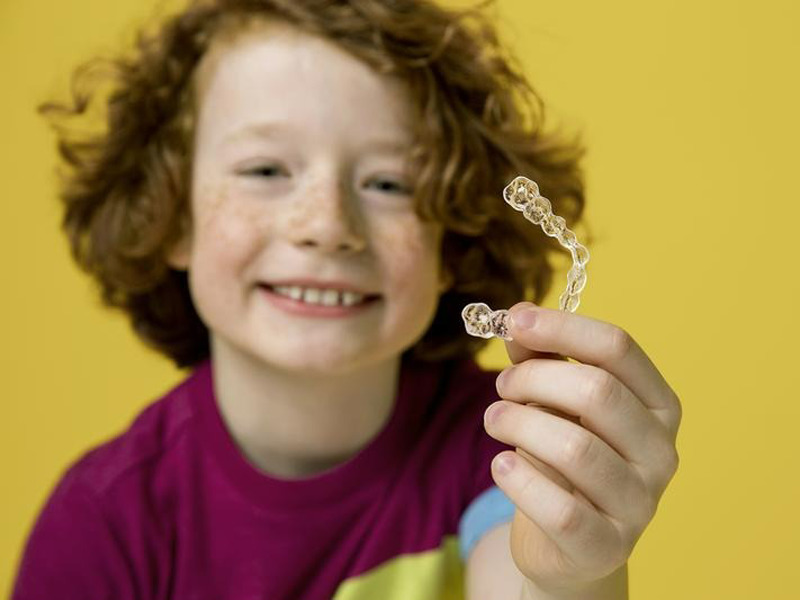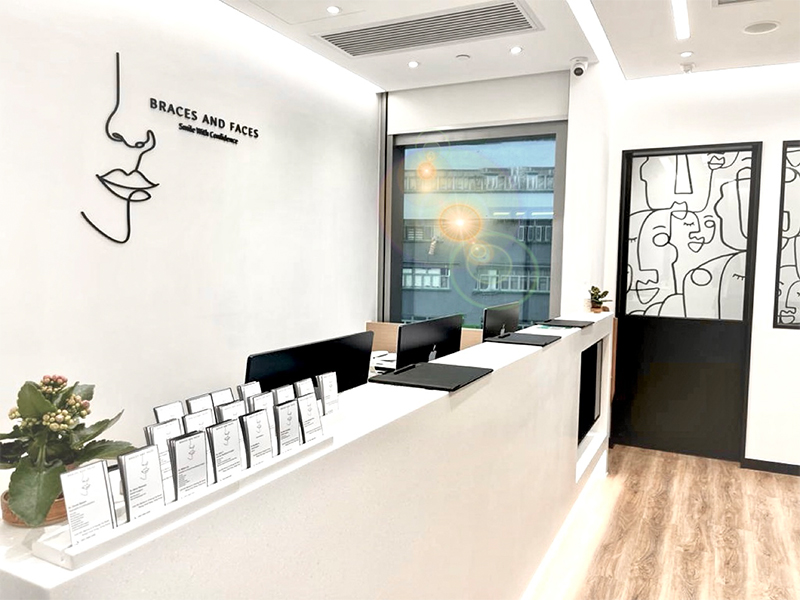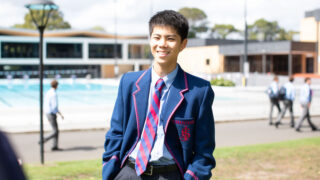Should I take my child to a dentist or an orthodontist? Or both? And at what age? Do kids need to reach a certain age before they can get braces? What kind of braces or aligners would be best for them? Parents often have lots of questions around their children’s teeth – and rightly so, as it’s a crucial aspect of young people’s health. We turned to Hong Kong dentist/orthodontist DR DEREK BARAM from Braces and Faces for some answers, including details of different brace options and the conditions they can treat in kids.
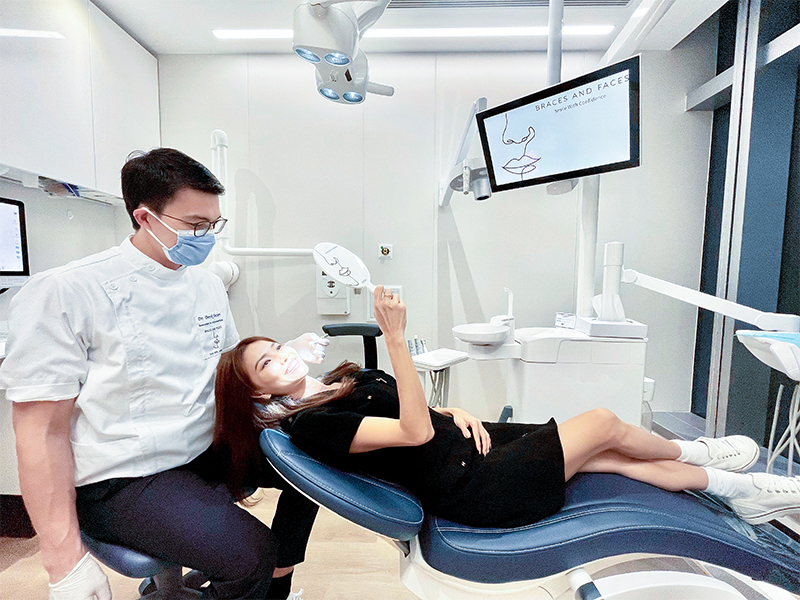
What age is best for a child’s first visit to an orthodontist?
Most orthodontic societies recommend children to have their first orthodontic appointment no later than age seven.
I understand this is much earlier than most would expect. But this is the time when the incisors and first permanent molars have erupted, giving us a good idea of the foundation of the bite and potential consequences. It’s important to ascertain certain orthodontic issues that can have irreversible damage – for example, tooth wear and gum recession. In some instances, it’s useful not just to move the teeth but encourage or restrain the growth of the jaw, using braces such as a jaw expander or functional appliances. This should be done during the growth spurt or before the jaw bones harden.
Here are 10 clinical conditions that are indicated to early orthodontic treatment:
- Severe crowding
- Crossbite – when the upper teeth fit inside the lower teeth at the back or front of the bite
- Overjet – protruded teeth
- Underbite – when the lower teeth and jaw protrudes beyond the upper teeth
- Traumatic overbite – when wear from incisors causes opposing tooth wear and/or gum recession
- Openbite – a gap between the upper and lower incisors when the child bites down
- Jaw underdevelopment causing breathing difficulties such as snoring, mouth breathing or sleep apnea in severe cases
- Oral habits – like thumb sucking or tongue thrusting
- Impactions – when teeth stuck inside the jaw bone, especially incisors, canines and molars
- Social reasons – for example, teasing at school
Should I wait to hear from my family dentist that my child could benefit from seeing an orthodontist? Or should I book an appointment independently?
This is a good question. The dentist will pick out most orthodontic issues but it’s wise to consider seeing an orthodontist; this is especially true if there is potential for severe misalignment, or large discrepancies in the bite (an overbite or underbite, for example).
Conversely, once a patient is undergoing treatment with the orthodontist, it is imperative the patient continues to see their dentist for regular check-ups and cleaning. Often orthodontists are so focused on the alignment and position of the bite, we don’t give the same attention to other dental issues.
What can I expect from my child’s first visit to an orthodontist?
The orthodontist will have a detailed look and take measurements of the jaws, lips, bite and teeth alignment. They’ll also arrange clinical photos to be taken as a record; these provide a good aid for explaining things to the child and parent.
If appropriate, X-rays or digital scans may be taken to assess teeth that haven’t come through or to examine the position of the roots and supporting bone. A lateral view X-ray (cephalogram) may also be taken to check the angles of the teeth and profile position of the bones. Recently, these X-rays, or even 3D CT X-rays, may give an indication of a patient’s airway to assess if that is a contributing factor to snoring or mouth-breathing habits.
The orthodontist next makes an assessment of the child’s condition and need for treatment; this includes explanations of the risks and benefits of treatment. The child and parent usually discuss this at home, after which a decision to start, delay or not have treatment is made.
At what age can a child get braces?
Usually the earliest is seven years. In rare instances, however, fixed/removable braces or tongue or thumb habit breakers can be fitted earlier to promote better growth and breathing habits.
Is it true that children are getting braces at an earlier age?
Yes, I would say so. I haven’t found any data suggesting this but my clinical experience supports the notion.
I believe this is due to greater awareness both amongst the public and within the profession, with more focus on other non-dental issues such as breathing and habits, heightened expectations and more treatment options that may be invisible or involve part-time wear.
Interestingly, studies have shown that the major influence for children to uptake orthodontic treatment is to do with peer groups more than gender or social class.
Are children’s teeth generally healthier now than they have been in the past?
In short, yes. Parent awareness and oral education schemes have helped a lot in improving children’s dental health.
In Hong Kong, for example, the School Dental Care Service, which is a free service for all children aged five to 12 years, has improved the oral health and care of children dramatically. We should be proud that we have one of the lowest incidence of cavities and especially untreated cavities amongst children globally.
Nursing-bottle cavities used to be more of an issue within our community, where young children sleep with their milk bottle – or worse, with a sugar-based drink. This often leads to multiple cavities inflicting the child at an early age and can then lead to a myriad of fillings under sedation. While this remains an issue, it’s certainly less prevalent.
Run us through the many different options when it comes to braces and aligners.
Metal braces: We still use traditional metal braces because it’s often the most efficient and predictable option. Children also enjoy choosing their colours.
Ceramic braces: These offer a more discrete look but with the same efficacy as metal braces.
Invisalign (clear aligners): These aren’t just for adults! Clear aligners can often move teeth more effectively than fixed braces; for example, when moving molars backwards or moving individual groups of teeth. They also act as a fantastic space maintainer compared to fixed metal options.
Suresmile aligners: This is a great lower-cost clear aligner option for simpler cases.
Jaw expanders: These are generally fixed to the upper molars to widen the palate to help the improve bite and create space; they reduce the likelihood of premolar extractions to relieve crowding and may improve airflow through the nasal cavity to reduce mouth breathing.
Functional (jaw correction) appliances: These are used in growing children who present with underdeveloped lower jaws or overdeveloped upper jaws. They can redirect a child’s jaw growth pattern and correct bites that are related to jaw discrepancies. The Twin-Block appliance is a common example of these.
Reverse headgear: Early correction of underbites are advantageous in most young children – before their jaw bones become too fixed for correction. Reverse headgear worn at night is effective for encouraging the upper jaw to come forward in children with severe underbites.
Removable braces: These aren’t used as often now because of their limited scope of movements and need for compliance. Yet they can offer simple and part-time solutions as an alternative to fixed braces.
How long will my child need to wear the braces?
Usually three to nine months for early treatment. We like early orthodontic treatment to be short and efficient. The objective is to improve aesthetics of the front teeth and to provide more favourable conditions (space and bite) for the adult teeth to develop. The last thing we want to do is to have extended and difficult early treatment; this can scare a child from having further dental or orthodontic treatment. It should be the opposite – children should come out thinking, “That was easier and faster than I thought.”
Are braces painful or disruptive to eating and other activities?
Most options aren’t challenging for a child to overcome; it typically takes three to five days for them to get used to it. In fact, children often put up with a lot more than adults!
How much do they cost?
The price ranges drastically from affordable simple solutions to more complex lingual and multi-specialist treatments. Pricing is quite a sensitive topic so I advise patients to call their dental practices to enquire directly.
What percentage of people who get treated with braces in your clinic are adults?
Around 50 percent of our orthodontic patients are adults. Invisible, cost-effective and efficient treatments such as Invisalign, lower-cost aligners (Suresmile) and lingual (behind the teeth) braces are making adult treatments more popular.
We also offer multi-specialty and aesthetically driven treatments carried out by a team of dentists and specialists. These include orthodontics paired with bleaching, veneers, Botox and jaw correction surgeries.
Braces and Faces dental clinic is the sister practice of Central Smile; it offers dental and orthodontic services in Wong Chuk Hang.
See more in our Living in Hong Kong section.

